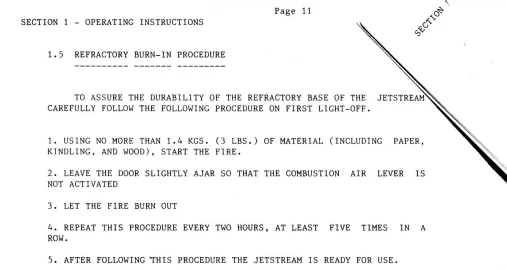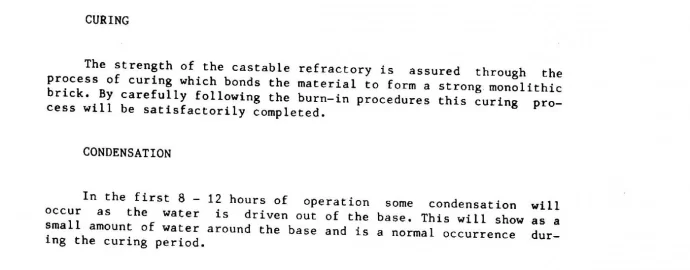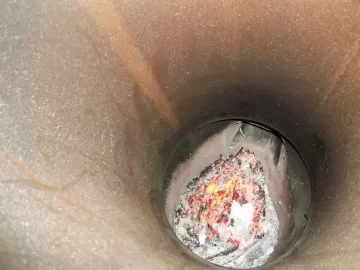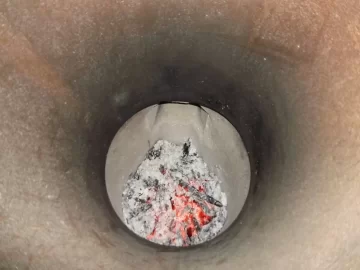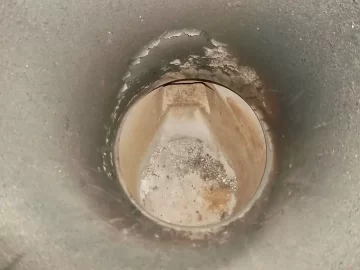Have been reading some threads on Nozzle changes so here are a few pictures of changing the nozzle on the old Jetstream.
The newest nozzle is home made using about 15 lbs of refractory. The original not in the picture lasted around 70 cords. The old one pictured here has about 30 cords of wear.
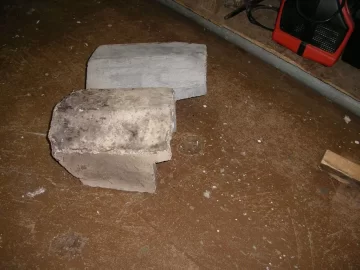
The nozzle can be seen in the ash settling chamber just below the combustion air injection pipe. The nozzle sits below the fire tubes which pass up through the heat exchanger. The elliptical section is the burn chamber that will give a combustion and loading chamber 42" tall when the heat exchanger is in place. This vertical feed gives a constant gravity supply of wood to the fire.
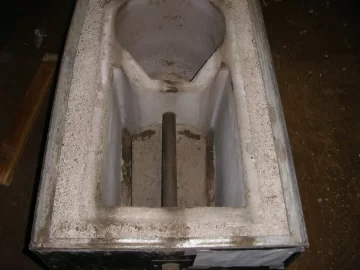
The clean out cover for the ash settling chamber has just 4 nuts to remove.
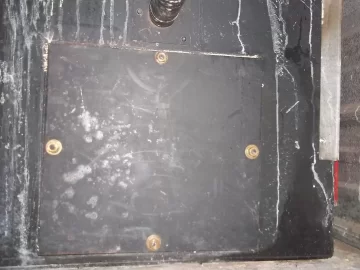
With the cover removed, you next remove the refractory plug.
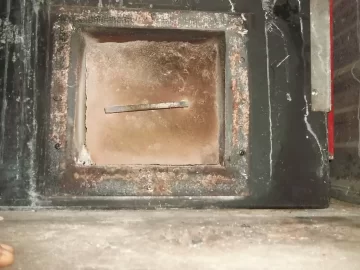
The nozzle when it has disintegrated, you can pull the broken pieces out, slide the new nozzle into place, cement it in place and process is complete.
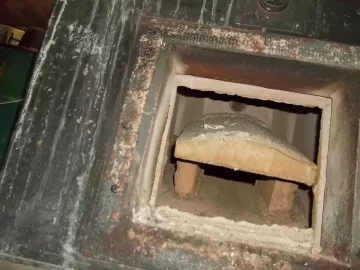
There is member from the Canadian Maritimes @slowzuki that at one time had 3 jetstreams. He felt the nozzles were a wear item and 5 to 6 years was good service.
The newest nozzle is home made using about 15 lbs of refractory. The original not in the picture lasted around 70 cords. The old one pictured here has about 30 cords of wear.

The nozzle can be seen in the ash settling chamber just below the combustion air injection pipe. The nozzle sits below the fire tubes which pass up through the heat exchanger. The elliptical section is the burn chamber that will give a combustion and loading chamber 42" tall when the heat exchanger is in place. This vertical feed gives a constant gravity supply of wood to the fire.

The clean out cover for the ash settling chamber has just 4 nuts to remove.

With the cover removed, you next remove the refractory plug.

The nozzle when it has disintegrated, you can pull the broken pieces out, slide the new nozzle into place, cement it in place and process is complete.

There is member from the Canadian Maritimes @slowzuki that at one time had 3 jetstreams. He felt the nozzles were a wear item and 5 to 6 years was good service.
Last edited:


